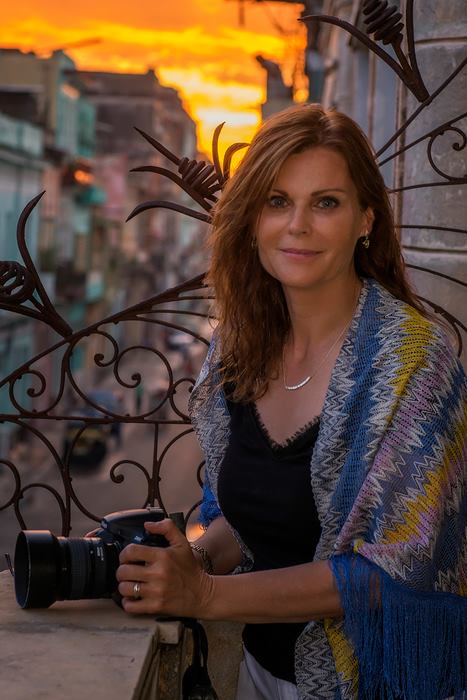Regardless of the kind of photography you’re interested in, knowing how to make a good portrait is an essential skill. As a landscape photographer, I’m generally more interested in working in the natural environment where light and atmospheric conditions affect the way I make my photographs. And that impacts how I approach my environmental portraiture. So I’d like to share with you my feelings on the best camera settings for outdoor portraits. Hope you find them useful!
Overrule the Autofocus Option
When focusing your camera on a subject you may notice a cluster of focus points pop up in your viewfinder. This is your camera’s autofocus setting deciding which areas should be the focus of your photograph. Don’t let your camera do this, especially when taking portraits. Should your subject’s face not take up the majority of the space in the viewfinder, you don’t want your camera picking up on a passing leaf rather than your subject’s face. Your subject’s eyes should be the sharpest point of any portrait, regardless of location or any other factor.
Use a Shallow Depth of Field
Before settling on an aperture, keep in mind the focal length of the lens. An ideal portrait lens would be in the 85-105 mm range. This allows you to use a somewhat smaller aperture and still have the depth of field you want, say f/8. With a wider angle lens you will need to use an even wider aperture f/4-f5.6 in order to blur your background. Also remember to keep your subject as far away from the background as possible.
Shoot in Raw
As I’ve said previously, Shooting RAW is always the preferred option. The picture file will come out in RAW format rather than JPEG, meaning it will contain all the raw (unprocessed) image information captured on your camera’s sensor. That means more tonal gradation, a smoother transition between colors and a greater depth of color and tonality. It will also allow you to edit the image in post-processing without losing any quality.
Understand the ƒ16 rule
The sunny ƒ16 rule is a rule of thumb that when your aperture value is set to ƒ16, your shutter speed will be in the inverse of the current ISO speed. So if your camera is set to ISO 100, and your aperture value is ƒ16, your shutter speed will be 1/100th of a second. Should you find yourself without a functioning meter on your camera this is a good way to get a generally usable image. However, for portraits, as we have discussed above, you will want to have considerably less depth of field than the f16 rule will give you.
Or use the Histogram
A more accurate alternative to the ƒ16 rule is your histogram — that spiky graph on your camera’s rear LCD display or on your electronic viewfinder (EVF). It’s a tool that tells you if your image is overexposed or underexposed. Check out this blog to learn how to read and use a histogram.
Mind the Sun
Even though you’re outside, you still want to mimic studio lighting to the best of your abilities.
That means using the sun to your best advantage. Generally you’ll want to put the sun at between 45-90 degrees from the front of your subject to create a pleasing wrap-around light. And rather than using direct sunlight which can be rather harsh, unless it’s early morning or just prior top sunset, either move under a shady object to get a softer, less contrasty light or move into the shade where the contrast is also less.
Also using backlight (coming from behind your subject) can be very effective, especially if your subject has wonderful hair that could use some highlighting. Remember, however, that you will need to add light to your subject’s face in order not to underexpose it.
Mind the Clouds
Even on a cloudy day when you can’t see the sun, light is still directional. Your DSLR sensor will register the light, but it is up to you to determine the direction. You may use a compass or your phone to determine where the sun is and put it to your side as you shoot.
I also have a little trick I use on really cloudy days: Open the palm of your hand and bend your middle finger all the way down. Now move your hand 360 degrees. You will find a small shadow appear on your palm when you have passed the sun. That is the direction of your light. It is easy and foolproof, and always fun to show others.
Lastly, whenever shooting outdoors, make sure to follow the rules of thumb for keeping your photography gear safe and dry! And when you’re doing portraits in a public place remember 2 things:
1) Be mindful and respectful of others around you, and
2) ALWAYS keep an eye on your equipment so it doesn’t grow legs and walk away
If you have any questions about the best camera settings for outdoor portraits, don’t hesitate to reach out to us and we’ll get back to you!
Learn and Travel with Steinberg Photography
Interested in honing your skills on a photography adventure with professional photographers Jim and Lori Steinberg of Steinberg Photography? We offer numerous exciting workshops and tours that are great for everyone from beginners to professionals.
See where we’re heading next!


